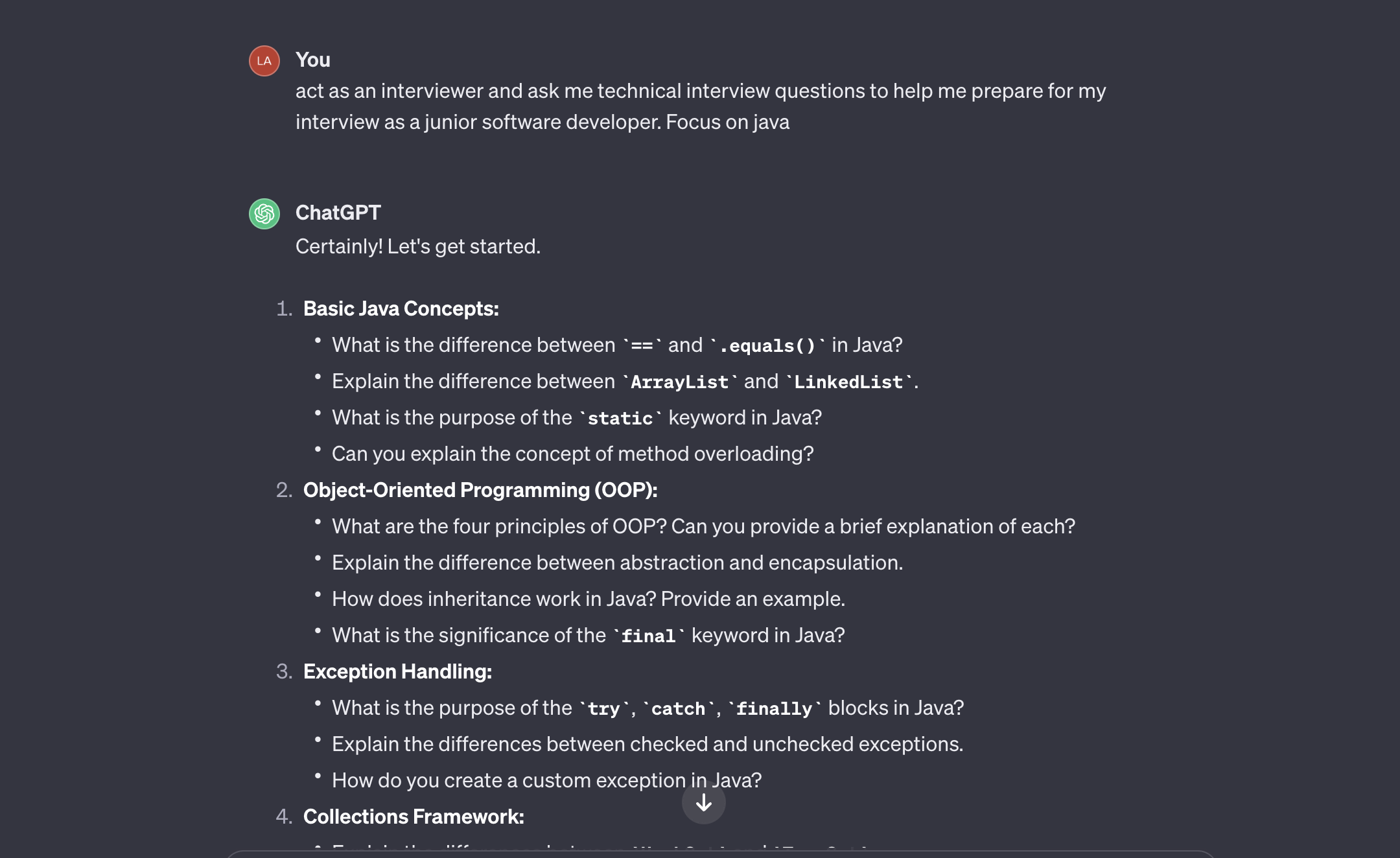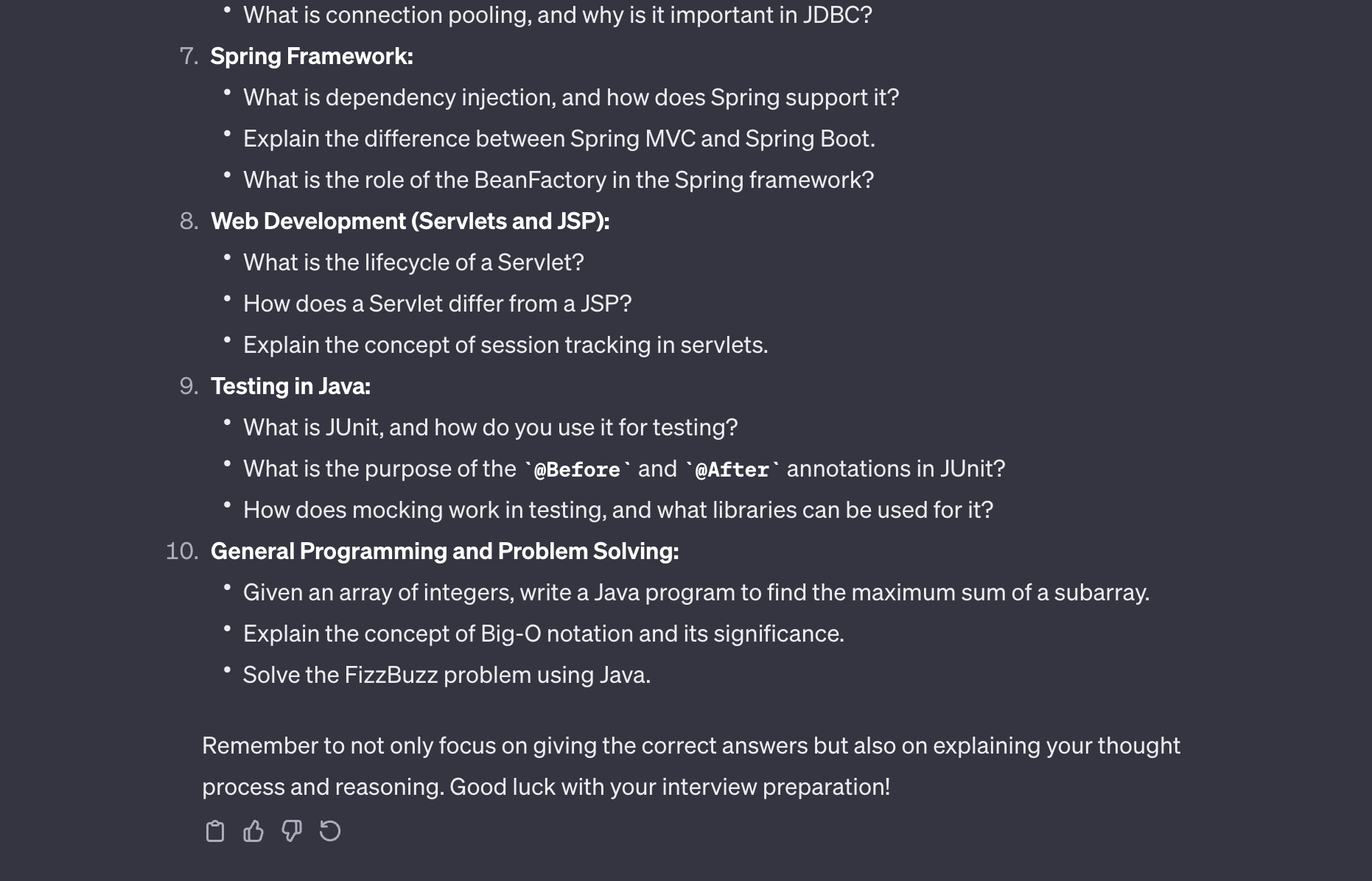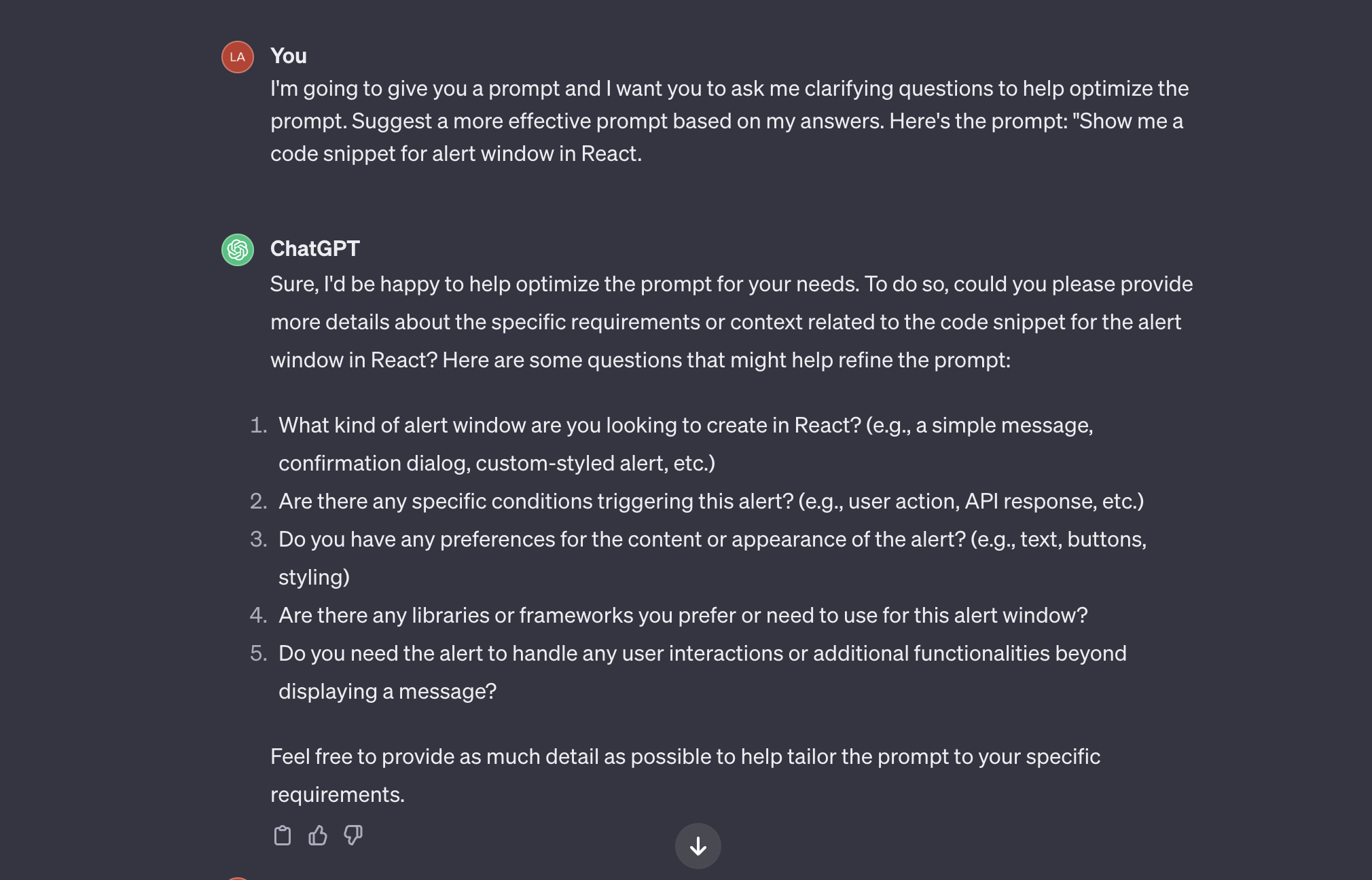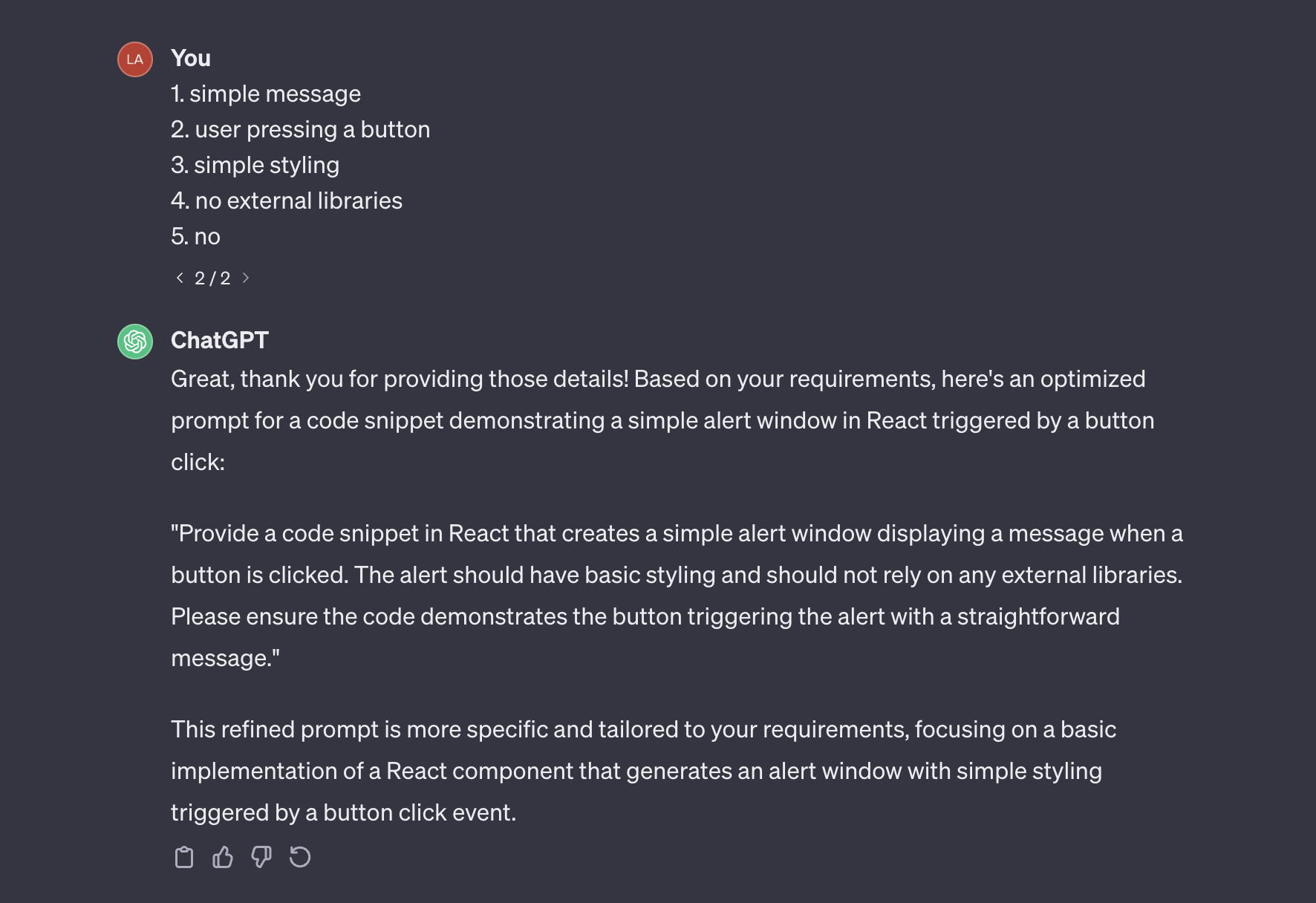Prompt Engineering for web developers
Table of Contents
🔺 Disclamer
- Some of the examples are taken from the course “prompt engineering for web developers” (Link in references)
- The model used is chatGPT 3.5
🚀 Introduction
Generative AI is a cutting-edge technology that enables computers to create human-like text, opening up exciting possibilities across various applications. At the heart of this technology lies prompt engineering, the art of communicating with AI models to yield the best results. As generative AI continues to advance, understanding and mastering prompt engineering becomes increasingly crucial for everyone and especially software developers. In this article, I will introduce some tips and tricks to make more effective prompts leading to fruitful results.
💡 Trick #1: Don’t bulk prompts
Usually when we have a big task in mind, we tend to write a big prompt to the AI model. However, breaking a big prompt into smaller prompts seems to enhance the response of the model. Furthermore, breaking the prompt into smaller ones can help you as a developer understand the code more. To make sure you understand every element of your code, you may ask chatGpt to give you small segments of the code and explain each one rather than giving you a large chunk to copy and paste into your code editor.
💡 Trick #2: Role-based prompting
This is by far my favourite trick and ,in my opinion, the mos effective one. Role-based prompting is assigning the model to a specific role, depending on the context of your prompt. Simply start your prompt with act as a.. or you are a... For example take a look at this prompt.

I asked chatGPT to act as an interviewer and ask me interview questions. It is like a mock interview scheduled in less than a minute!

💡 Trick #3: Ask the model first
Another very useful trick is optimizing the prompt as good as possible. This can be done by asking the model to give you the best prompt given a specific context. The process goes as follows:
- Prompt the model to ask you some questions that will help yield the best prompt
- Answer the questions based on what you want
- Take the output prompt and give it back
Below is an example prompt with the answers


💡 Trick #4: Prompt with examples
Giving the model an example of the ouptut you want can drastically improve the quality of the response. These examples assist the model in offering more accurate and tailored solutions or guidance related to coding, design, or troubleshooting. By showcasing the expected outcome, whether it’s a particular webpage layout, responsive design behavior, or code functionality, the model can better understand the intricacies and nuances involved in the request.
⭐ Conclusion
In conclusion, as generative AI technology like ChatGPT continues to revolutionize various sectors, mastering the art of prompt engineering emerges as a pivotal skill, especially for software developers. Through the implementation of specific strategies, such as breaking down larger prompts into smaller, more digestible segments, adopting role-based prompting techniques, optimizing prompts through model interaction, and providing clear examples of the desired output, developers can harness the true potential of AI models. These tactics not only enhance the quality and precision of AI-generated responses but also empower developers to deepen their understanding of code, streamline problem-solving, and expedite the development process. Embracing these effective prompt engineering strategies will undoubtedly pave the way for more efficient and productive interactions between developers and AI models in the realm of generative AI.